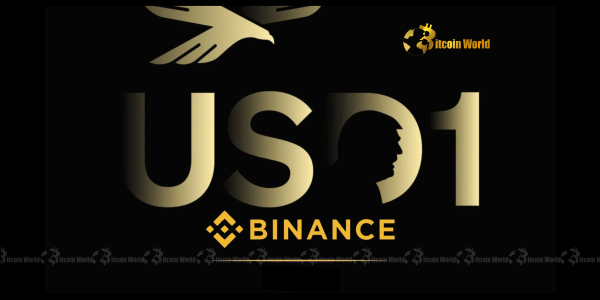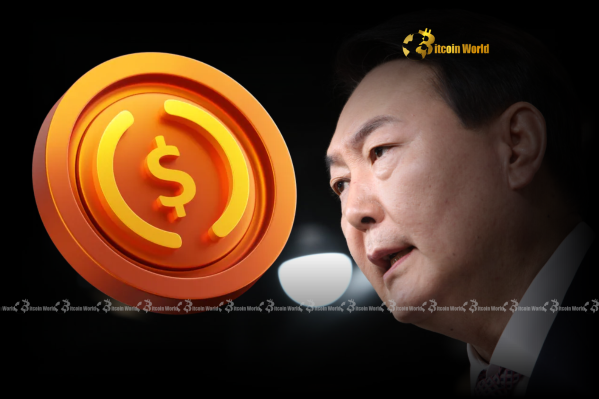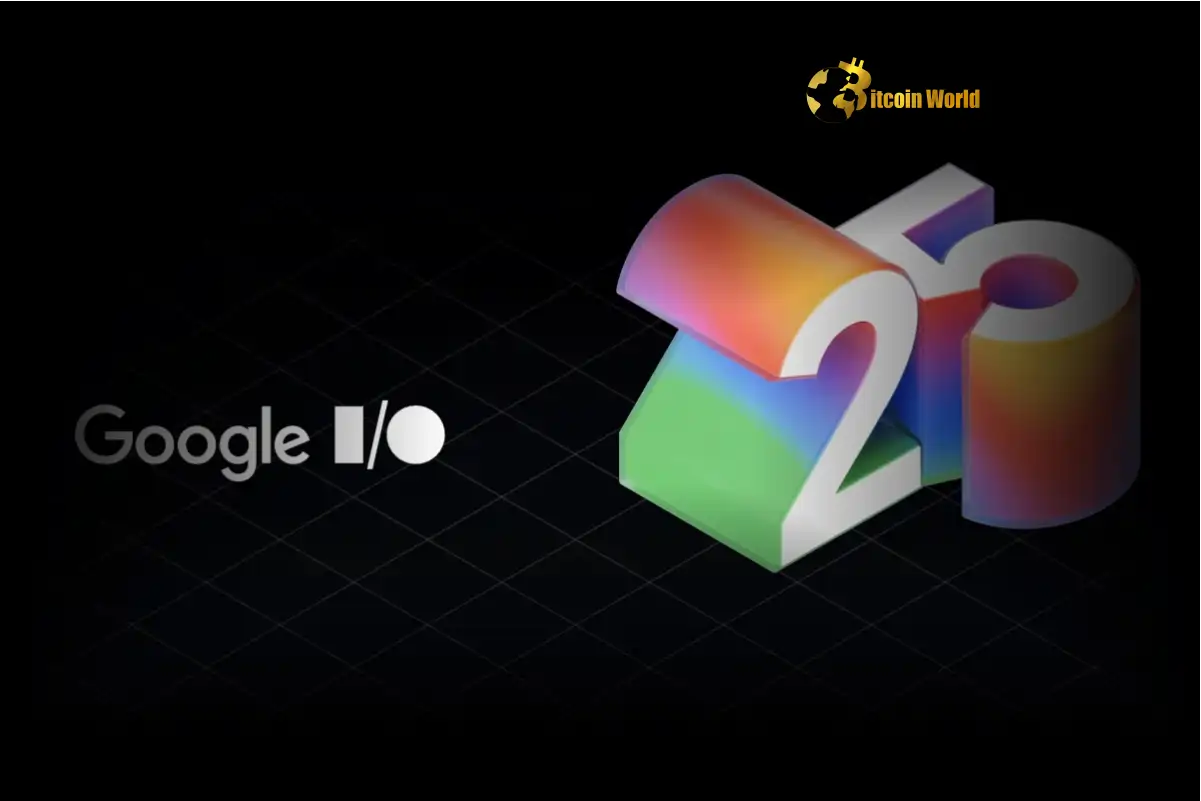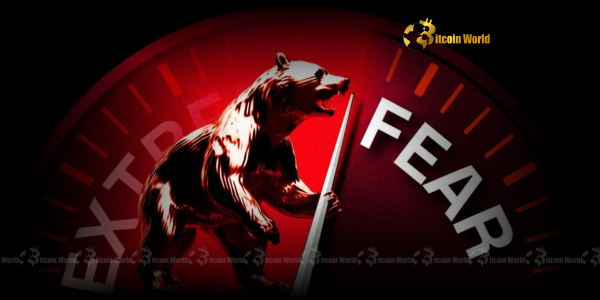
The cryptocurrency world is no stranger to controversy, but a recent Bloomberg report has sent shockwaves through the industry, pointing fingers at crypto giant Binance. At the heart of the matter lies a stablecoin named USD1, reportedly tied to the Trump family’s World Liberty Financial (WLF). This report suggests a deep involvement from Binance in the creation and distribution of this particular Binance Stablecoin, raising significant questions about political influence, business ethics, and the very fabric of the digital asset space.
Binance Stablecoin: Did the Crypto Giant Help Launch USD1?
According to a bombshell report from Bloomberg, crypto exchange powerhouse Binance allegedly played a pivotal role in the development and deployment of USD1, a stablecoin linked to the Trump family’s World Liberty Financial (WLF). The publication, citing three individuals familiar with the situation, claims that Binance assisted in writing the smart contract for USD1. This is a significant technical undertaking, as smart contracts are the foundational code that governs how a digital asset operates on a blockchain, dictating its rules, issuance, and transfer mechanisms. If true, this involvement would mean Binance provided core technological infrastructure for WLF’s stablecoin ambitions.
Beyond just the technical development, the report further alleges that Binance facilitated the stablecoin’s availability for use through a massive $2 billion transaction. While the exact nature of this transaction remains somewhat opaque in the initial report, it suggests a substantial financial commitment or arrangement that would have enabled USD1 to gain significant liquidity and reach within the crypto ecosystem. This level of alleged involvement, both technical and financial, paints a picture of a much deeper partnership than mere listing or advisory roles, thrusting the Binance Stablecoin narrative into an entirely new light.
Unpacking USD1 Stablecoin: What Are Its Controversial Ties?
The USD1 Stablecoin itself is a central figure in this unfolding drama. Stablecoins are a crucial component of the cryptocurrency market, designed to maintain a stable value, typically pegged to a fiat currency like the US dollar. They aim to combine the benefits of blockchain technology (such as fast, low-cost transactions) with the stability of traditional currencies, making them ideal for trading, remittances, and hedging against crypto volatility. However, the controversy surrounding USD1 stems not from its technical design, but from its reported associations.
USD1 is linked to World Liberty Financial (WLF), an entity associated with the Trump family. This connection immediately raises eyebrows, especially given the current political climate and the increasing scrutiny on the intersection of politics and finance. The idea of a stablecoin, a digital asset meant to be neutral and universally accessible, having direct ties to a prominent political family introduces a layer of complexity and potential conflict that is rarely seen in the crypto space. The report’s implication that political influence was potentially leveraged for business gain through this stablecoin further complicates the narrative, prompting a deeper look into the transparency and governance of such ventures.
World Liberty Financial: Is Political Influence Shaping Crypto?
The involvement of World Liberty Financial and its alleged ties to the Trump family introduces a critical dimension to this story: the potential for political influence to shape the trajectory of a cryptocurrency project. The Bloomberg report explicitly highlights a ‘conflict of interest issue,’ suggesting that political sway may have been used to advance business interests within the digital asset sphere. This isn’t just about a company launching a stablecoin; it’s about who that company is connected to, and how those connections might impact the broader market and regulatory landscape.
In an industry that often champions decentralization and independence from traditional financial and political structures, such allegations are particularly potent. They challenge the perception of crypto as a purely meritocratic or technologically driven space, suggesting that real-world political capital could be a significant factor in a project’s success or adoption. For regulators, this scenario could underscore the urgent need for clearer guidelines on political lobbying, transparency in stablecoin reserves, and the prevention of undue influence in the burgeoning digital economy. The very notion of a politically connected stablecoin, whether through direct involvement or indirect influence, sparks debate about the future integrity and perceived neutrality of digital finance.
Crypto Conflict of Interest: How Did CZ Respond to the Allegations?
The allegations of a Crypto Conflict of Interest involving Binance and the USD1 stablecoin naturally drew a swift response from Binance founder Changpeng Zhao (CZ). Known for his direct communication style, CZ took to social media to address the claims, stating unequivocally that the article’s claims are ‘groundless.’ This direct denial from one of the most influential figures in the crypto world adds another layer of complexity to the narrative, pitting a major financial news outlet’s investigative reporting against the public statements of a powerful industry leader.
CZ’s denial highlights the challenge of verifying information in the fast-paced and often opaque world of cryptocurrency. On one hand, investigative journalism plays a vital role in holding powerful entities accountable. On the other hand, the crypto industry has frequently been the target of misinformation or sensationalized reporting, leading to a climate of skepticism. Binance, under CZ’s leadership, has faced numerous regulatory challenges and legal battles globally, making any new allegation, especially one involving political ties, a significant point of concern for its reputation and ongoing operations. The market and public will now watch closely to see if further evidence emerges to substantiate or refute Bloomberg’s claims.
Beyond the Headlines: What Does This Mean for Blockchain News and Trust?
This Bloomberg report is more than just a piece of breaking Blockchain News; it’s a potent reminder of the growing pains and evolving challenges within the digital asset industry. Allegations of a major exchange facilitating a stablecoin for a politically connected entity, coupled with claims of a conflict of interest, underscore several critical themes that the crypto world must confront:
- Regulatory Scrutiny: As crypto moves further into the mainstream, it inevitably attracts more attention from regulators. Reports like this will likely intensify calls for stricter oversight, particularly concerning stablecoins, their reserves, and the entities that issue or facilitate them. Governments are increasingly concerned about financial stability, consumer protection, and preventing illicit activities, and politically charged collaborations could accelerate regulatory actions.
- Industry Transparency: The incident highlights the ongoing need for greater transparency within the crypto ecosystem. While blockchain technology itself is transparent, the operations of centralized exchanges and the relationships between various crypto projects and traditional entities often remain opaque. Increased transparency regarding partnerships, funding, and governance structures could help build greater trust.
- Trust and Reputation: For Binance, a company that has worked to navigate a complex global regulatory landscape, these allegations could impact its reputation and perceived trustworthiness. For the broader crypto industry, such stories can erode public confidence, making it harder to attract new users and institutional adoption. Maintaining trust is paramount for the long-term growth and legitimacy of digital assets.
- The Interplay of Power: The report clearly demonstrates how traditional power structures—political influence and established media—are increasingly intersecting with the nascent world of crypto. This dynamic will continue to shape the industry’s future, as crypto projects navigate not just technological hurdles but also complex political and economic landscapes.
Ultimately, this situation serves as a critical test for the crypto industry’s maturity and its commitment to principles of fairness and transparency. How these allegations are resolved, and how the industry responds to the challenges they present, will be vital for its future trajectory.
The Bloomberg report on Binance’s alleged involvement with the USD1 stablecoin and World Liberty Financial has ignited a firestorm of debate. From claims of Binance’s direct role in smart contract development and a massive $2 billion transaction to the contentious issue of political influence, the narrative is complex and fraught with implications. While Binance founder CZ has vehemently denied the allegations, the story underscores the growing intersection of cryptocurrency, traditional finance, and political power. As the digital asset landscape continues to evolve, issues of transparency, regulatory compliance, and potential conflicts of interest will remain at the forefront, shaping the future of blockchain technology and public trust in this dynamic space. The crypto community awaits further developments in this intriguing and potentially industry-defining saga.
To learn more about the latest crypto market trends, explore our article on key developments shaping Binance’s future and stablecoin regulations.





